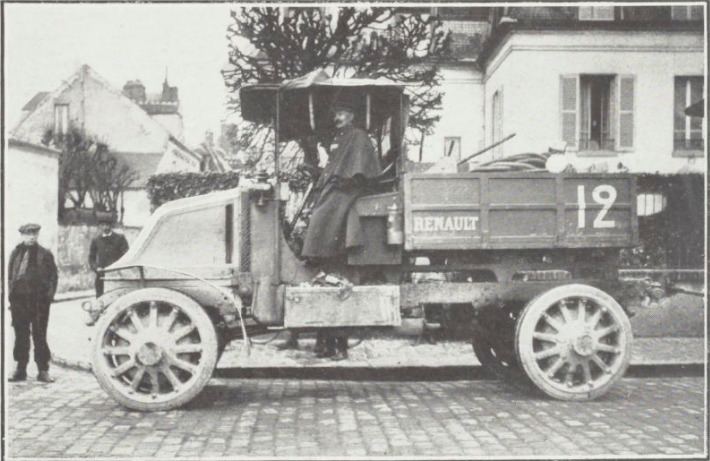Production 1914–1918 | ||
 | ||
The Renault EG is an all-wheel drive truck/artillery tractor produced between 1914 and 1918 by the French manufacturer Renault.
Contents
History
The Renault EG was tested at the 1914 tests for all-terrain vehicles organised by the French military. In 1914, Renault developed a lighter version, the FB, but it was abandoned for concentrating on the EG. During World War I, it was commissioned by the French military. Mass production started in 1915 and about 978 were built by the end of the war. EGs, along with the Berliet CBA, the Latil TAR, the Renaults EP and FU, and the Saurer Type B, were key vehicles of the Voie Sacrée (Holy Road) for supplying the French army during the Battle of Verdun.
Technical details
The EG engine is an 8.49-litre inline-four unit producing between 35 metric horsepower (26 kW) at 1,000 rpm and 45 metric horsepower (33 kW) at 1,400 rpm. As other Renaults of that time, the radiator is located behind the engine. The EG has a four-wheel steering system by which front and rear wheels are moved independently through two steering gears linked by universal joints to the steering wheel, improving the turning radius. The gearbox is a 4-speed operated through a gear lever. The double wheels are made of cast steel and are of the same diameter (1,000 millimetres (39 in)) both on front and rear. The truck payload is 2,000 kilograms (4,400 lb) and it can haul about 15 tonnes. The wheelbase is 3,600 millimetres (140 in) and the width 1,500 millimetres (59 in).
